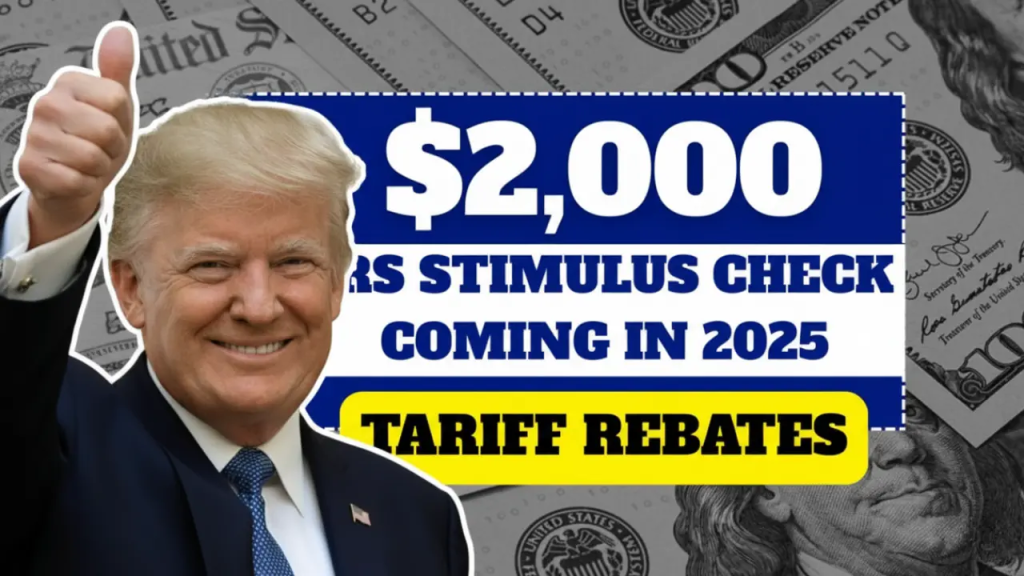Tariff rebate checks are a proposed way to send money to Americans using revenue from tariffs on imported goods. In this model, the government collects tariff revenue and returns part of it to households as direct payments. Supporters say this links trade policy to visible benefits for citizens. Critics warn it could raise prices for consumers. Here’s how tariff rebate checks could work and what they might mean for you.

How Tariffs Fund Tariff Rebate Checks
Tariffs are taxes on imports. They make foreign goods cost more, which can shift demand toward U.S. products. The government collects the tariff revenue. With tariff rebate checks, a portion of that revenue would be redistributed as direct payments—potentially up to $2,000 per person under the proposal.
Tariffs can also serve broader goals: protecting domestic industries, encouraging local production, and shaping trade negotiations. Results vary by product, demand elasticity, and the strength of U.S. supply chains.
Why Propose Tariff Rebate Checks Now
Economic stimulus. Direct payments can lift household spending and support local businesses.
Support for workers. Rebates can cushion groups affected by trade shifts.
Domestic production. Tariffs can improve the price position of U.S. manufacturers; tariff rebate checks share part of the policy’s gains with consumers.
Pros and Cons of Tariff Rebate Checks
Potential Benefits
- More consumer spending. Direct cash often flows quickly into the economy.
- Targeted relief. Checks can be geared toward lower-income households.
- Industry support. If tariffs bolster U.S. producers, jobs and investment may rise.
Potential Risks
- Higher prices. Tariffs can raise the cost of everyday goods, which may offset part of the rebate.
- Trade tensions. Partners may retaliate, affecting exporters and supply chains.
- Budget questions. Tariff revenue must be large and steady enough to fund meaningful tariff rebate checks without crowding out other priorities.
Eligibility and Distribution (If Enacted)
Details would require legislation. Past direct-payment programs often phased benefits by income, filing status, and dependents. Expect identity verification and standard delivery methods (e.g., direct deposit, paper checks, or debit cards). Clear rules are essential for fairness and fraud prevention.
Historical and International Context
- U.S. direct payments. The federal government has used stimulus checks during the Great Recession and the COVID-19 pandemic to stabilize demand.
- Resource dividends. Alaska’s Permanent Fund Dividend shares state oil revenue with residents. While different from tariffs, it shows how public revenue can fund annual household payments.
What Tariff Rebate Checks Could Mean for You
If enacted, tariff rebate checks would offer near-term cash for bills, savings, or debt reduction. Balance that gain against possible price increases from tariffs and any ripple effects on jobs and trade. A simple plan for using any payment—prioritizing essentials, emergency savings, and high-interest debt—can help maximize the benefit.
Key Questions to Watch
Sunset or ongoing? Is the program temporary, counter-cyclical, or permanent?
Size and funding. How much tariff revenue is available per year for tariff rebate checks?
Targeting. Will payments be universal or phased by income?
Trade impacts. How will partners respond, and what’s the effect on prices and exports?

Conclusion
The proposal for tariff rebate checks links trade revenue to household cash payments. It could deliver quick relief and reinforce domestic industry goals—but it also brings price, trade, and budget trade-offs. Following the details in any bill text will be crucial to understanding who qualifies, how much is paid, and how the program handles economic risks.



